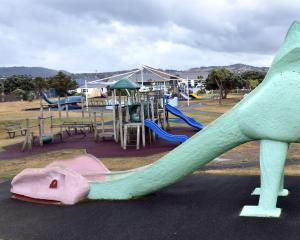
But meteorologists are warning holiday-makers not to count their Christmas chickens or plan for barbecues just yet.
MetService meteorologist Lewis Ferris said there was still more than a week until the big day, and there was still significant uncertainty about how two tropical cyclones near Fiji and Niue would affect New Zealand’s weather.
"So these forecasts shouldn’t be taken as set in stone."
Temperatures have been tentatively forecast to reach the early 20s in calm and dry conditions at inland holiday spots around Otago.
In coastal parts of Otago and in Southland, rain and showers are expected to prevail over Christmas Eve, Christmas Day and Boxing Day, but temperatures will be relatively warm.
Mr Ferris said with all the information available at the moment, there was a good chance December 25 would be met with settled weather, but there was a "notable risk" for less than ideal conditions.
“The atmosphere is an incredibly dynamic fluid which is impossible to model exactly, especially when dealing with tropical cyclones, even with modern computing power."
By looking at a range of deterministic and ensemble computer models, meteorologists could weigh up the most "impactful" outcome with the most likely one.
Deterministic computer models provided the most probable single solution from one computer model, and gave a reasonable idea out to six days.
"At 10 days, we are pushing the limits of their accuracy and it really shows as the models have very different solutions for New Zealand.
"As an example, the model run by the European Centre for Medium Range Forecasts [ECMWF] has a large ridge of high pressure over New Zealand, which would bring relatively settled conditions almost countrywide."
However, the model run in the United States by the National Centres for Environmental Prediction (NCEP) brought a low-pressure system close to Northland, which could bring showers to eastern and northern parts of the South Island.
When there were conflicting forecasts, meteorologists turned to ensemble computer models, he said.
"In a nutshell, an ensemble is the same model run multiple times with slightly different starting conditions, resulting in slightly different forecasts in the future.
"This is useful to show how likely a particular outcome is, based on how many members of the ensemble follow the same story.
"Starting again with the model from ECMWF, the deterministic idea of settled weather is well represented in many ensemble members, which gives extra confidence in that outcome.
"By contrast, the ensemble from NCEP shows the idea of a low to the north is pretty well represented. A situation bringing settled weather is also there but is outnumbered by the wetter outcome.
“As illustrated, the uncertainty of forecasting 10 days out is very real."
As for the weather in the build-up to New Year’s Day, it was still too far off to give a meaningful forecast, he said.
"It would be wizardry if we could do that."












